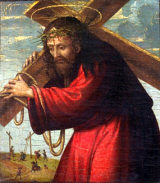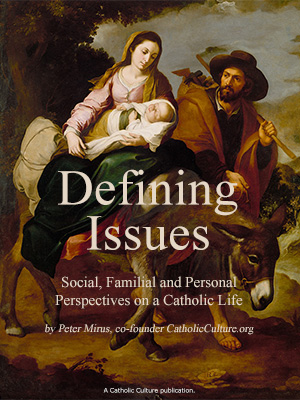Catholic Activity: The Liturgy of Lent

Explanation of the liturgy of Lent from Ash Wednesday to Passion Sunday.
DIRECTIONS
Austere is the watchword for the liturgical celebrations of the Season of Lent. The Church has proclaimed a time of fasting and self-denial and she teaches by example. The priest is vested in violet, “the gloomy color of affliction and mortification,” except on the Fourth Sunday of Lent (Laetare Sunday) when he might choose the festive option of rose vestments. The sanctuary is bereft of flowers, and less ornate linens and candlesticks adorn the altar. The Gloria will not be prayed on Sunday, while the Alleluia will be entirely absent throughout Lent.
The use of musical instruments is limited to the accompaniment of singing. Weddings are discouraged during Lent and in fact, all celebrations should be characterized by restraint. Even the feast days of Saints are observed in a reduced manner, with the priest wearing the violet of the season rather than the red or white of the saint. By this penitential ‘fast of the senses’, Holy Mother Church prepares our hearts for a jubilant Easter renewal.
There are two exceptions to the Lenten austerity. On the Solemnities of St. Joseph (March 19) and the Annunciation (March 25) the Church sets aside her purple for white vestments, sings the Gloria and prays the Creed. (We genuflect at the “et Incarnatus est” on the Annunciation.) The Solemnity of St. Joseph, Patron of the Universal Church and foster father of Jesus, is a feast of highest rank—a holy day of obligation in some countries and, in some, even a civil holiday! On the Solemnity of the Annunciation, we celebrate a feast that propels us into the Christmas mystery. Jesus, the Savior who will shortly give his life for our sins, is this day conceived in the Virgin Mary’s womb. Her “fiat” to an angel, will undo the subjection to sin caused by Eve’s “yes” to a fallen-angel. This is indeed the most sublime moment in the history of time.
Ash Wednesday inaugurates the Lenten Season, and its readings set the guidelines for our 40-day journey. The Gospel gives us our Lenten “marching orders”: pray, fast, and give alms, not for outward show but with hearts that are converted. We receive the sacramental ashes as testimony to our desire to do penance and bear our cross after Jesus.
Subsequent Scripture readings of the Lenten Liturgies give us daily lessons based on three major themes:
1) The first three weeks call us to repentance and to the practice of virtue, though the Church will suspend her penitential readings on Laetare Sunday, the midway point of the Lenten journey, to rejoice that Easter is near.2) The second theme that threads its way through the seasonal readings is the instruction of the catechumens who are preparing for Easter-birth. The Rites of Christian Initiation span the season of Lent and culminate in the Easter Vigil Rites of Baptism and Confirmation of the Elect. The various readings put before our eyes many Old Testament characters and events that prefigure Christ and the Paschal Mystery: Christ is the new Adam, and he is the Isaac of the New Covenant; the Church is the new Ark which saves mankind through the waters of Baptism, etc.
3) The final scriptural theme unfolding in the last two weeks of Lent is the mounting opposition of the Jews toward Christ. The sixth and final Sunday of Lent (Passion or Palm Sunday) will usher in Holy Week, the greatest and holiest of all weeks. The liturgies of Holy Week and the Sacred Triduum are so rich and so important that they must be expounded in a section all its own.
Activity Source: Original Text (JGM & MG) by Jennifer Gregory Miller and Margaret Gregory






